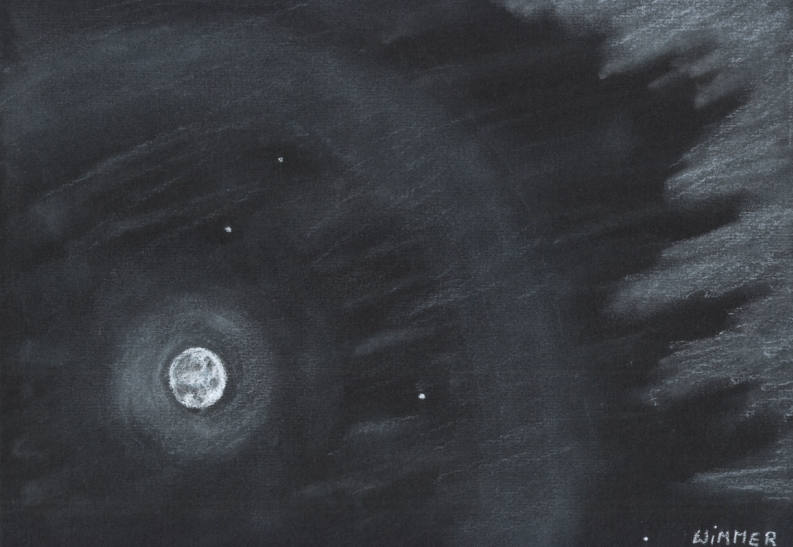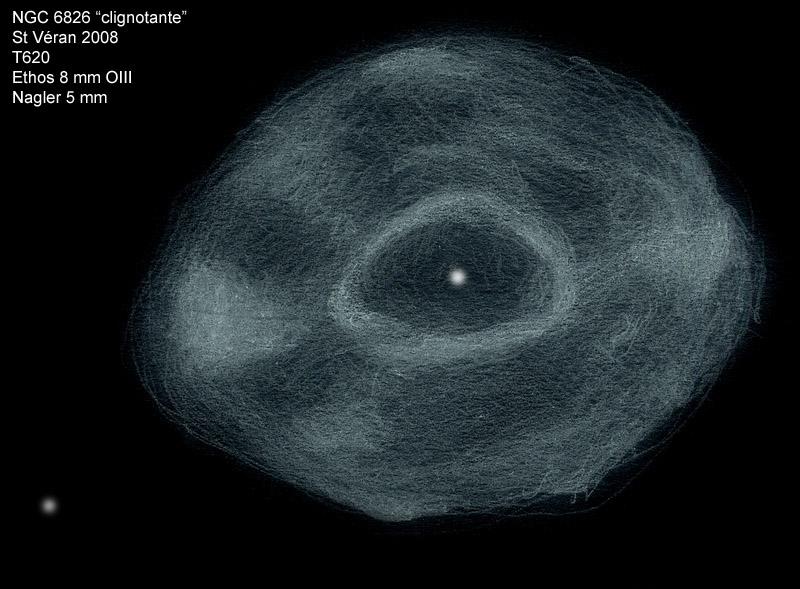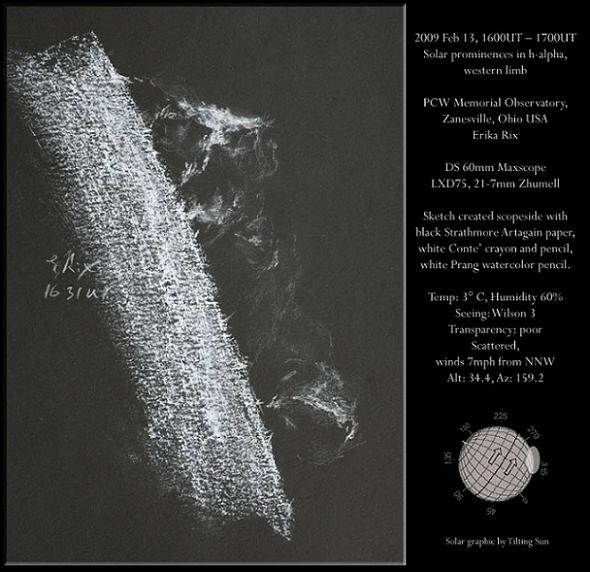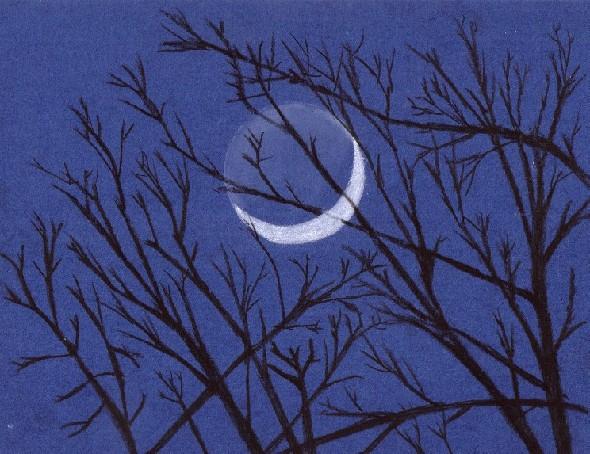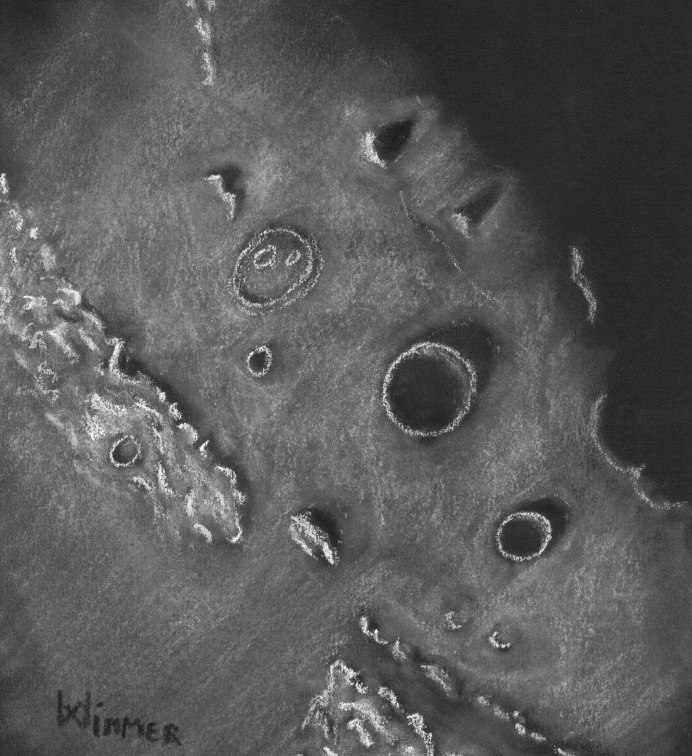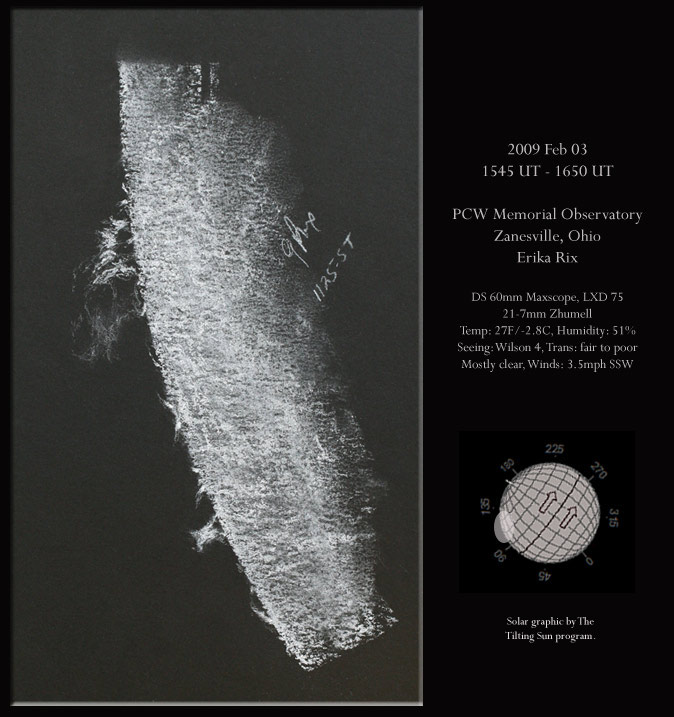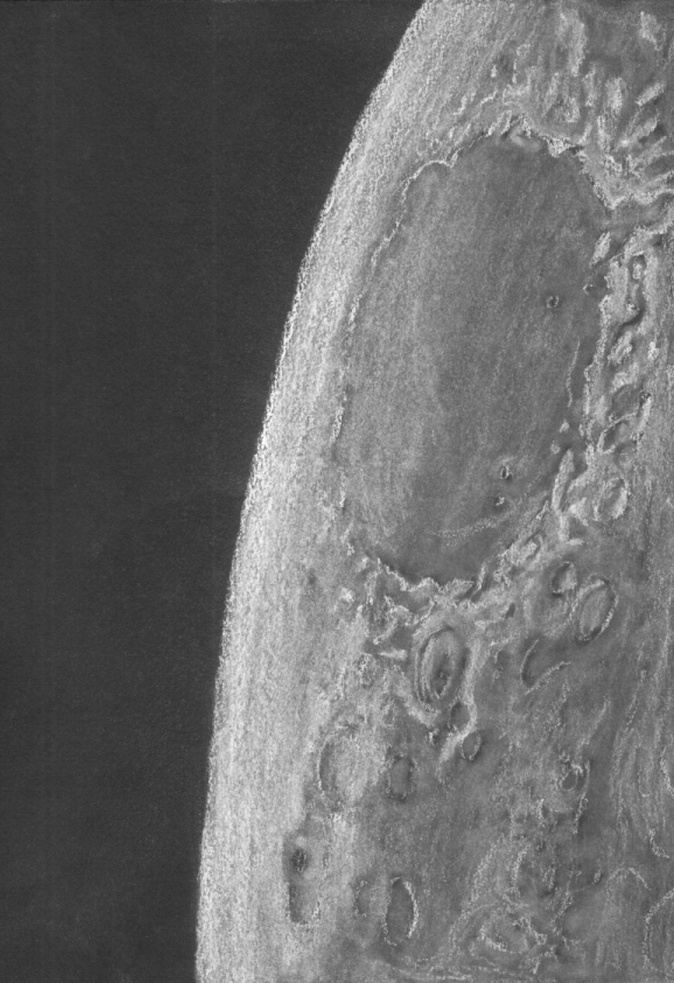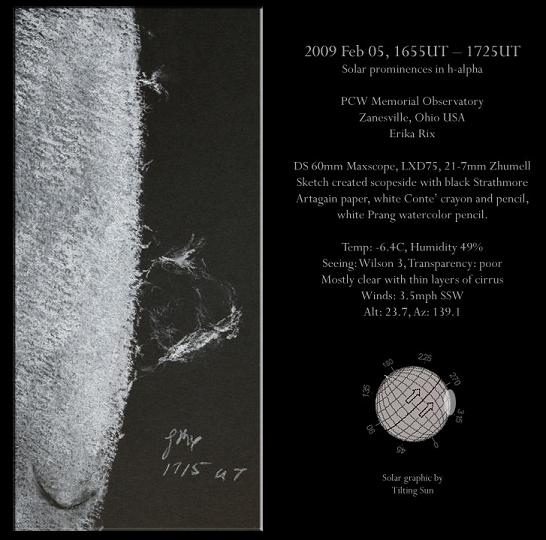
Solar prominences 2009 Feb 05, 1655UT – 1725UT
Sketch and Details by Erika Rix
2009 Feb 05, 1655UT – 1725UT
Solar prominences in h-alpha
PCW Memorial Observatory, Zanesville, Ohio USA
Erika Rix
DS 60mm Maxscope, LXD75, 21-7mm Zhumell
Sketch created scopeside with black Strathmore Artagain paper, white Conte’ crayon and pencil, white Prang watercolor pencil.
Temp: -6.4C, Humidity 49%
Seeing: Wilson 3, Transparency: poor
Mostly clear with thin layers of cirrus, Winds: 3.5mph SSW
Alt: 23.7, Az: 139.1
There was an area that I suspected was a new AR just NW of center while observing in h-alpha. It appeared to have two small plage with a single tiny sunspot to the west of them. After pulling out the ETX70 with a white light filter, all that I could see were moments of visible granulation and there were neither faculae nor pores to be seen.
To the south, in h-alpha, there was a very bright smaller prom with several tiny fingers of proms around it. Heading about 30 degrees west around the limb I noticed a thick medium sized prom that was very faint and the base of it was nearly impossible to see.
On the NW limb were two slender proms that on closer inspection it was obvious that they were actually one intricate arch of a prominence with delicate tendrils attaching at different points within it. A filament was visible to the north of it, nearly reaching to the limb.
Other than a short thick filament to the north about 15 degrees in from the limb, as well as a few tiny proms not already mentioned, I just soaked in the surface view and called it a day.
